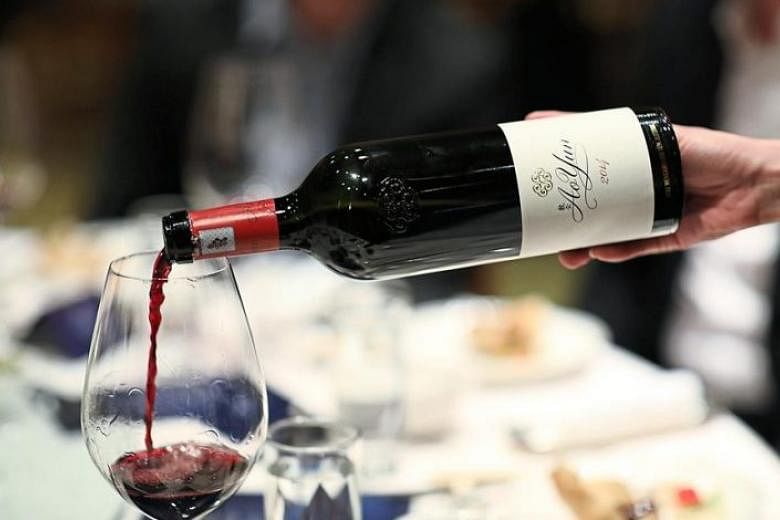CHINA (THE STAR 2/ASIA NEWS NETWORK) - China may be the world's fifth-largest consumer and producer of wine, but most of the wines that have been produced in the country have yet to come close to those from more established Old and New World wine regions.
Until now, that is.
Moet Hennessy recently released the Ao Yun 2013, the first vintage of a red wine made in the mountains of China's Yunnan province, near Tibet.
The name Ao Yun means flying above the clouds, referring to the clouds capping the summits of the Himalayan mountains.
First released in European and American markets last September, before being marketed and sold in China and Asia early this year, the wine has garnered positive reviews from wine critics; it has even been called "the best Chinese wine I have ever tasted" by renowned wine critic James Suckling.
It was in 2009 when Christophe Navarre, chief executive officer of Moet Hennessy, made the decision to find a place where he could make a good quality red wine in China.
"The whole thing started because the president had the vision to do something in China. He was the driving force behind it," Jean-Guillaume Prats, president of Moet Hennessy's Estates and Wines division said, during an interview in Kuala Lumpur early this year.
After several years of searching, the company finally found the perfect spot in the north-western part of Yunnan province, near the city of Shangri-La, in several villages high above the Mekong River, located between 2,000m and 2,600m above sea level.
Grape vines were already being grown in the area, thanks to Jesuit missionaries who had planted them in the 19th century.
Then in 2002, the local Chinese authorities started a project to help the farmers around the area plant Cabernet. Moet Hennessy selected four villages for their project, and built the winery in Adong, the highest village.
"The grapes were just one of the villages' crops. Everything is organic and has to be done by hand," Prats said. "No one had any idea there were vineyards in the area before we came in!" he said. "Before we went in, these grapes were going to a local winemaker."
While the potential of the grapes was there, actually turning them into wine was a logistical nightmare.
"First of all, there are no proper roads to these farms. The nearest city is Shangri-La, and from there, we have to drive in on four-wheel drives for about four to five hours," he recalled.
"Then, there are also the cultural barriers. The local village people there are in different worlds from us. We had to put ourselves in their shoes to find out what their concerns were, on a daily basis."
Getting to and from the farms wasn't the only problem - in the beginning, the farms had no electricity, so everything had to be done by hand.
They didn't even have proper oak vats or barrels when the time came to ferment the 2013 vintage. According to Prats, the truck carrying the fermentation tanks had been impounded, after the driver ran over someone on the way to the location.
In the end, they fermented the wine in amphorae, or ceramic jars, used to ferment baijiu (Chinese spirits) instead.
The result of this rather unique process was a wine that is unlike anything ever produced in China. "When we started production, we had in mind a fairly rich wine. Then when we tasted the few amphorae of 2013, we could see there was something unique there," Prats said.
A blend of 90% Cabernet Sauvignon and 10% Cabernet Franc with 15.1% ABV, only 24,000 bottles of Ao Yun 2013 were produced, with each initially selling for US$250 (S$340). Reviews have been almost unanimously positive for the new wine, and Prats says that there will be more exciting things to come from the brand.
"To be honest, we are just at the surface of this brand. It takes generations to understand, and make mistakes, with an operation like this," he said.
"Already, there will be a big stylistic evolution with the 2014 expression, simply because it is better made, with more precision, using better equipment.
"We will continue to improve by better understanding the terroir and improving the logistics.
"We have already achieved with the first vintage, a wine that has been said to be the best ever produced in China.
"It has the potential to become one of the iconic wines of the world, could possibly even become one of the greatest of the world."

